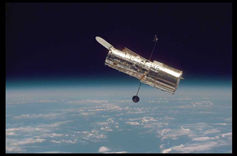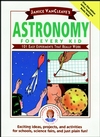
This colorful photo of Jupiter, the fifth planet from the Sun, was taken from the Hubble Telescope. Notice the area on the lower right side of Jupiter. This is where fragments from a comet collided into the giant planet in July 1994. This was a thrilling and a once-in-a-lifetime opportunity for scientist to watch comet pieces – traveling at 130,000 mph – slam into the planet and explode. It was an explosion unlike any ever witnessed.
The Hubble Space Telescopes is in an orbit about 390 miles above Earth’s surface. With a speed of about 5 miles per second, it takes 96 minutes for this space craft to complete one orbit.
When you look at a tree, you see it because light reflecting off different parts of the tree enters your eye. The lens in your eye directs the light to the back of your eye where special cells receive it and send messages to your brain. Your brain decodes these messages and voila’ you know what the tree looks like.
If you look toward the tree on a very foggy day, what you see will be different than what you see on a clear sunny day. This is because the fog affects the amount and direction of light passing through it. Likewise, the Earth’s atmosphere affects the light from celestial bodies making them less visible through telescopes on Earth. The Hubble telescope, is not affected by changing weather conditions in the Earth’s atmosphere, and has a clearer view of celestial bodies.
More Later, Janice
For more information about astronomy, see Janice VanCleave’s Astronomy for Every Kid
